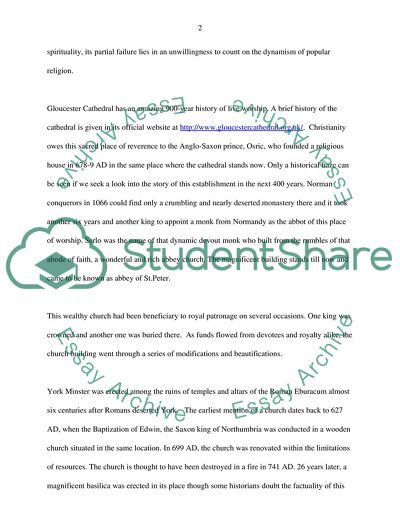Cite this document
(History of Gloucester Cathedral and York Minster Literature review, n.d.)
History of Gloucester Cathedral and York Minster Literature review. Retrieved from https://studentshare.org/history/1721402-how-has-the-use-of-spirituality-and-space-of-gloucester-and-york-cathedral-been-changed-before-and-after-the-reformation
History of Gloucester Cathedral and York Minster Literature review. Retrieved from https://studentshare.org/history/1721402-how-has-the-use-of-spirituality-and-space-of-gloucester-and-york-cathedral-been-changed-before-and-after-the-reformation
(History of Gloucester Cathedral and York Minster Literature Review)
History of Gloucester Cathedral and York Minster Literature Review. https://studentshare.org/history/1721402-how-has-the-use-of-spirituality-and-space-of-gloucester-and-york-cathedral-been-changed-before-and-after-the-reformation.
History of Gloucester Cathedral and York Minster Literature Review. https://studentshare.org/history/1721402-how-has-the-use-of-spirituality-and-space-of-gloucester-and-york-cathedral-been-changed-before-and-after-the-reformation.
“History of Gloucester Cathedral and York Minster Literature Review”, n.d. https://studentshare.org/history/1721402-how-has-the-use-of-spirituality-and-space-of-gloucester-and-york-cathedral-been-changed-before-and-after-the-reformation.


